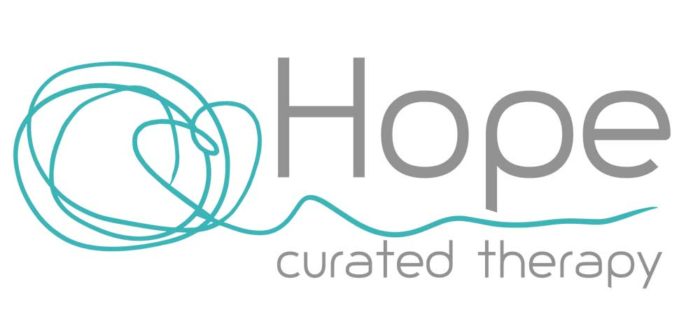Nowadays, businesses need websites to reach a wider audience. If you’re a practicing therapist, you need to connect with the online crowd.
4.9 billion people use the Internet. That’s a large crowd to reach out to. They won’t stick around if your site’s design looks like it was built by an amateur.
We tend to judge things visually before anything else. If your site looks like it was made by a professional, it will resonate with visitors. A well-designed site will also rank higher on Google because of how you handle content.
Not sure how to design the perfect website? There are a few basic but important steps to start with.
Consider the following eight tips to set up a client-friendly therapist website.
. . .
1. The Perfect Logo
Your website’s homepage is the centerpiece of your business. You’ll want to have a neat and catchy logo for display.
Your logo alone says a lot about who you are and what your website is about.
While the logo is the centerpiece, it doesn’t necessarily mean it should be at the center. It depends on how creative you can get and if your website theme allows it.
Logos should always be present on every page. It should be bigger and prominent on the homepage because it’s what people see first when they visit your site.
2. Your Headline Should Give the Heads Up
It only takes a few seconds to let people know they’re visiting the right website.
Your headline shouldn’t beat around the bush. It should simply and clearly communicate to potential clients about the type of services you offer and what your therapy can do for them.
. . .
3. Easy Navigation
There’s something frustrating about wandering around websites for therapists and not being able to find the information I’m looking for.
Poor navigation can increase your site’s bounce rate. It will also make your returning customers lose interest in visiting your site.
It all comes down to a good user experience for your potential clients. How?
One way is to make the information crystal clear with the navigation menus. Create a clear structure for the navigation menu. Put only the essential pages and place the secondary pages within them.
It’s just like how you organize files on your computer. If you have categorized main folders and relevant sub-folders after that, you can easily find what you need.
. . .
4. Show Yourself
There are many therapist sites that don’t show a photo of the therapist. Don’t follow this trend because good images actually boost your conversion rates.
You don’t want to seem sketchy or detached from your patients. Your therapist website should have a friendly, professional photo of yourself.
Your patients will be opening up about their personal problems to you. You need to make it seem like they’re not conversing with a robot.
Don’t try to handle the task by yourself. Visitors notice amateur photos and will assume your business is at a beginner’s level too.
Hire a professional photographer. Little things like that go a long way. Or, even better, record a video for your therapist website.

5. Identify Yourself
Include a short introductory paragraph about yourself, your practice, and the expected results that clients can achieve from you.
This can lead to a more in-depth About page we recommend creating for your website. On this page, clients will get to know more about the person you are beyond the professional side.
The About page should also contain a Call-to-Action (CTA). This encourages visitors to subscribe or avail of your services.
. . .
6. Connect with Your Clients
Let’s say your therapist website does its job. Your clients want to contact you for your services, so you need to create an easy-to-find contact form.
Mind you, this is different from email subscription and messaging.
Opening an email can be a tedious thing. It inconveniences the clients because they have to open a separate page just to contact you. Also, displaying your email address publicly is an easy way for spammers to target you and phish your information.
Add a contact form and make it easy to find.
Put the contact form right in the main navigation menu of your therapist website. Label it using clear words like Contact or Book a Session.
. . .
7. Go Mobile
This should be a priority. Everyone is on mobile and the majority of the web traffic comes from mobile. In fact, 95% of Americans use a smartphone.
In other words, most of your potential clients will visit your therapist website on their mobile phones. You can’t ignore them.
Make sure your website is mobile optimized. It’s important that your website’s design is responsive to reformat the content’s size for a mobile screen.
After that, test your mobile therapist website using Google’s mobile-friendly tool.
If there’s a go signal from Google, your website will rank higher in the search engine. You’ll gain more visitors and potential clients as a result.
. . .
8. Don’t Get Lazy with SEO
A good website should include SEO (Search Engine Optimization).
To make it simple, SEO for therapists is how you convince search engines like Google to show your website when someone searches for keywords like “online therapist.” SEO is essential to your website because search engines are the best platforms to get visitors.
Let’s say you have a gorgeous, high-quality therapist website. But if you don’t have any visitors, then what’s the point?
Keep in mind that there are SEO standards a good therapist website design has to check. Do you have the right amount of keywords displayed per page? Do you use the right ALT tags for your images?
It may be easier to outsource SEO services. It can seem costly at first, but the benefits will eventually pay for it.
Why Wait? Get a Great Therapist Website Design Today
You’re most likely trying to save money, but we believe that a good business starts with a good investment.
A good therapist website is what your practice needs to attract and retain new clients.
Need a helping hand? Feel free to contact us and we’ll help you design a high-quality site you’ll feel proud of.















